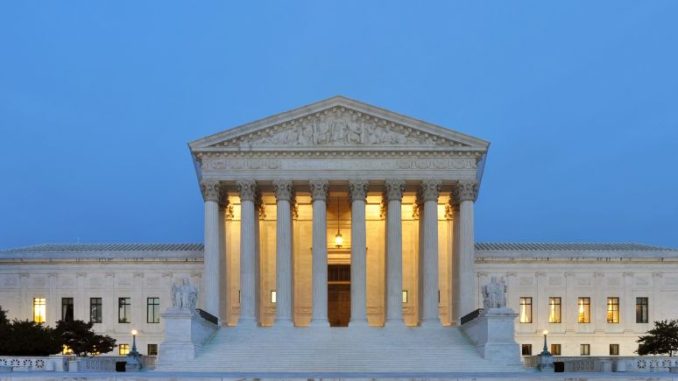
The Supreme Court handed down a decision on Monday in the case of Husted, Ohio Secretary of State v. A. Philip Randolph Institute et. al. The decision was 5 – 4 in favor of Ohio’s rules used to purge voter rolls.
This was not a case where two rights were in contention with each other. Rather, this was a case where individual laws seemed to be potentially in conflict.
On the one side, you had the Ohio rules for removing people from registration lists. Those rules call for a registered voter, if they failed to vote in two successive Federal elections, to receive written warning about their registration status. A series of postcards are then mailed with return postage guaranteed; if any of the postcards are returned, the voter is kept on the registration lists. If not, a four year countdown is started; if the registered voter does not vote over the course of those four years, they are removed from the lists.
A Navy veteran named Larry Harmon had failed to vote in 2009 and 2010, and then had failed to return a series of postcards mailed to him in 2011. He then did not attempt to vote until 2016… after he had been removed from the lists.
Harmon, with the aid of civil rights groups, sued. They argued that two federal laws had been violated: the National Voter Registration Act and the Help America Vote Act.
The court found that the Ohio law had followed the NVRA “to the letter” and even reminded the petitioners that Congress had included directions of how to interpret the NVRA. Per the ruling:
When Congress enacted HAVA, it made this point explicit by adding to the Failure-to-Vote Clause an explanation of how the clause is to be read, i.e., in a way that does not contradict subsection (d).
From that guidance, the arguments about NVRA violations were found to be invalid.
The Help America Vote act had theoretically been violated because of a stipulation that “no registrant may be removed solely by reason of a failure to vote.” From that, the argument was made that because the postcard mailing had been triggered by the failure to vote, it was to be interpreted as part of a larger “failure to vote” set of actions. The inclusion of the word “solely” undermined this argument, for the majority decision. Failure to return postcards was deemed to not be the same as failing to vote.
The dissent held that every action triggered by the failure to vote could reasonably be interpreted as part of the “solely by reason of a failure to vote.” Sotomayor went further and said that the NVRA was, indeed, violated not because the letter of the law was broken nor because the arguments made at the time the law was passed indicated that the intent of the law was being ignored, but rather that the arguments made by activists at the time the law was enacted were not adequately represented by the lawmakers, and that the intent of those who had inspired the law was being undermined.
She was alone in publicly furthering that opinion.
The end result is that the Supreme Court has made clear that they support the laws as written, which will clear the way for other states to continue purging their voter rolls, provided no evidence can be brought of suppression of voters in contrast to existing laws.
